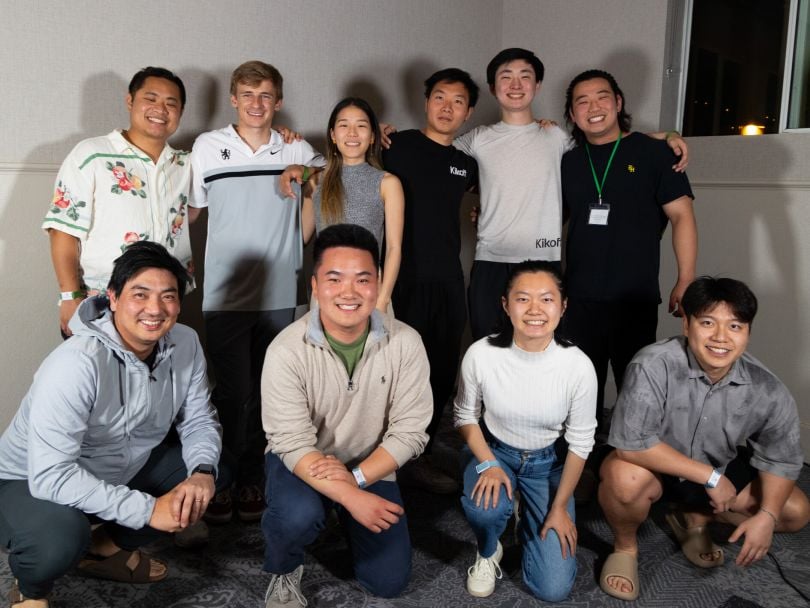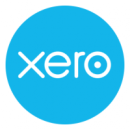Software engineers have different reasons why they love their jobs, but there’s one aspect of their roles that all of them can agree on: a compelling project can transform their year.
For three local tech employers, 2025 is shaping up to be an exciting and innovative year, as their engineering teams get started tackling projects with the potential to shape their businesses’ future. Each of these projects presents engineers with the opportunity to hone their technical skills — and make an impact.
Alongside his peers at Kikoff, Engineering Manager Patrick Wang will be busy migrating the company’s platform from React to Solid.js this year. He said that this will enable his team to address technical debt among other things while reaping the benefits of Solid’s architecture, such as automatic dependency tracking.
Wang believes that this project will put his team in a better position to succeed long-term — a feeling that Director of Engineering Navneet Rao can relate to. At Thumbtack, he currently oversees his team’s efforts to implement AI into the search experience on the company’s platform. Having worked on various AI projects throughout his career, Rao knows how important it is to know how to leverage the technology and feels as though its use will make it easier for his team to transform other product areas within the company going forward.
Of course, Thumbtack isn’t the only company eager to refine its AI offerings. Director of Engineering Eddie Ma and the rest of his team at Xero are adding enhanced AI and machine learning capabilities to the company’s fintech software. He said that this will help the company generate value for small businesses, making it easier for them to benefit from fintech systems.
Below, Wang, Rao and Ma share more about the projects they’re most excited to tackle this year, the impact of these projects and the expertise they bring to the table.

Kikoff aims to help consumers improve their credit scores, offering them a secured credit card that works like a debit card and checking account as well as a platform that allows them to track their credit-building journey and set up automatic payments.
What project are you most excited to work on in 2025, and what is particularly compelling about this work for you?
In 2025, I’m particularly excited to work on the React to Solid.js migration project. It presents a great opportunity to address tech debt, which will not only streamline our codebase but also enable us to build more advanced components and experiences without needing to concern ourselves as much with performance hacks in React.
What excites me most about Solid’s architecture is the combination of factors that make it so effective: automatic dependency tracking and explicit un-tracking, context ownership and improved cleanup management. Automatic tracking decreases overhead during development while preventing a host of reactivity bugs. Direct access to context ownership gives us the ability to build much more intuitive and powerful primitives. Along with these, given that Solid components aren’t constrained to the rules of hooks from React, we’re able to colocate much more logic. These elements together offer a more maintainable and scalable system, allowing us to build features that are both high-performing and easier to manage as the project evolves.
“What excites me most about Solid’s architecture is the combination of factors that make it so effective: automatic dependency tracking and explicit un-tracking, context ownership and improved cleanup management.”
What does the roadmap for this project look like? Who will you collaborate with, and what challenges do you anticipate having to overcome?
The roadmap for the Solid migration project is already well underway, with the foundational work complete. The next phase will involve setting up flexible service route switching to facilitate incremental migration, allowing us to gradually transition various flows while testing as we go. The entire front-end engineering team will be collaborating on this effort, ensuring that all aspects of the migration are handled efficiently and effectively. Many of the key challenges have already been addressed, including rebuilding our foundational APIs and developing tooling tailored to the new framework.
However, given the scale of the project, one of the main challenges we anticipate will be balancing the migration with ongoing product development. To overcome this, we’ll need to carefully manage our time and resources, ensuring that we stay on track with both our migration goals and product priorities. Strong accountability within the team will be crucial in maintaining momentum and ensuring we meet our milestones without compromising on quality.
What in your past projects, education or work history best prepares you to tackle this project? What do you hope to learn from this work to apply in the future?
My experience gained from building the original front-end codebase from the beginning will be very helpful in tackling this project. All architectural decisions, robust APIs and lessons learned during that phase will inform the migration process as we transition to Solid. Our team’s deep familiarity with the existing system provides a solid foundation for identifying areas of improvement and ensuring that the migration is both smooth and effective. This project offers an opportunity to refine our app architecture and tooling while improving our strategies around incremental migration, tech debt prevention and managing large-scale refactors — skills that will strengthen our ability to handle similar challenges moving forward.
Thumbtack’s home improvement platform connects consumers with local professionals and service businesses, free service cost estimates and custom guides for project planning.
What project are you most excited to work on in 2025? What is particularly compelling about this work for you?
Thumbtack enables millions of homeowners to find and hire the right professionals to help with their home projects. Projects like replacing a leaky roof or installing kitchen shelves can be complex, expensive or stressful to manage. Many homeowners face uncertainty about where to start. If you’re a homeowner trying to install new kitchen cabinets, you may be in the middle of scoping out what you want the design to look like while wondering whether to search for a “carpenter” or “handyman.”
The new generation of large language models like Open AI’s ChatGPT are enabling us to grasp the complexity and nuance of human expression. My team plans to use these advances in AI to innovate our search experience and make it easier for homeowners to express their project or problem in conversational, everyday language and have Thumbtack understand their needs. For example, if you search for “install new kitchen cabinets,” we aim to build a personalized product experience that really gets you and not only matches you to pros that can do the job but also enables you to choose the right professionals.
“My team plans to use these advances in AI to innovate our search experience and make it easier for homeowners to express their project or problem in conversational, everyday language and have Thumbtack understand their needs.”
What does the roadmap for this project look like? Who will you collaborate with, and what challenges do you anticipate having to overcome?
At Thumbtack, we’ve prioritized adopting the advances in AI across many different problem spaces including search, recommendations and trust and safety. In 2024, we developed new policies and infrastructure frameworks to productize the use of LLMs in a secure, reliable fashion. In 2025, as newer models continue to become available through vendors or open-source releases, the complexity of these LLMs continues to grow. This likely means that we will have to make a conscious trade-off between model performance and scalability. This will likely involve collaborating across many different teams at Thumbtack that seek to improve performance, like our applied science team, while working on scalability constraints with our ML infrastructure or data engineering teams.
Although working across different functions, such as engineering, product, applied science and design, and across different teams is never simple, a unique aspect of Thumbtack’s culture is that you never feel siloed across functional or team boundaries. “Choose teamwork” is not just an ideal but a core Thumbtack value employees lean into every day to make such complex multi-function, multi-team initiatives succeed.
What in your past projects, education or work history best prepares you to tackle this project? What do you hope to learn from this work to apply in the future?
For over a decade, I have worked on a variety of challenging AI problems in areas across search and natural language processing. The one constant has been the rapid pace of change associated with these AI advances. This has meant that you have to be willing to adopt new technologies and frameworks without fretting about having to discard your previous work. I am hoping that our AI innovations around the search experience can build a truly differentiated product experience for Thumbtack, and also help make it easier to transform other product areas within the company going forward.
Xero’s online accounting software is designed to help small business owners accept payments, manage invoices, access bank data, streamline employee payroll and more.
What project are you most excited to work on in 2025, and what is particularly compelling about this work for you?
I am starting a zero-to-one initiative in 2025 that will create a new paradigm on how consumers, particularly small business owners, are engaging with and served by fintech technologies. Leveraging Xero’s strong foundation of accounting platform and its ecosystem of fintech services, we are creating a layer of product that will serve as an infrastructure to applications and platforms, seamlessly enabling fintech capabilities to their customers. Incorporating new advances in technologies and Xero’s continued focus on bringing AI and machine learning into business systems, we expect to drastically simplify how small businesses are served by fintech systems.
“Incorporating new advances in technologies and Xero’s continued focus on bringing AI and machine learning into business systems, we expect to drastically simplify how small businesses are served by fintech systems.”
What does the roadmap for this project look like? Who will you collaborate with, and what challenges do you anticipate having to overcome?
We are expecting to build the foundation of the new system in the first half of 2025, launching a minimum viable product later in the year. We will be working closely with our industry partners to create an integrated system that we will continue launching new services through for the next two years. In order to drastically simplify the user experience with the fintech system, we are expecting innovations around business data services, information security and AI/ML capabilities that serve day-to-day business activities. Our goal will be consolidating system technologies and AI capabilities to create value in the daily life of small businesses.
What in your past projects, education or work history best prepares you to tackle this project? What do you hope to learn from this work to apply in the future?
I led fintech engineering at Uber, creating systems that bring AI/ML into real-time fraud detection on Uber’s platform, as well as financial intelligence that enables mission-critical business decisions, in addition to basic financial services around tax, invoices, accounting and planning domains. Prior to Uber, I led computing, storage and data infrastructure areas at VMware, Microsoft and Facebook, with an industry-leading edge to innovate in cloud computing and big data spaces. With the new zero-to-one initiatives, I hope to bring my past technical and business experience to create a new way consumers conduct their daily financial management.











